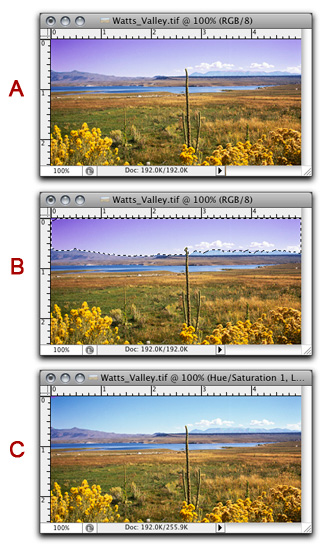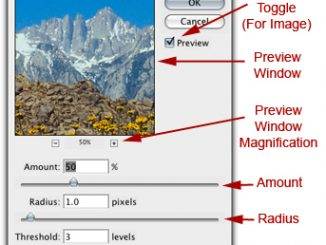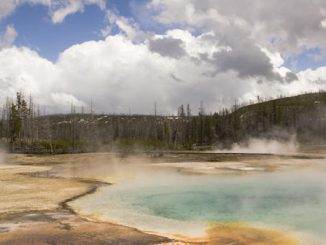NOTE: This article is for older versions of Photoshop
(prior to CS6/CC), but the fundamentals still apply.
PURPOSE
Selection tools and techniques will give you the ability to make corrections (such as contrast, sharpening or color correction) “Locally” (a portion of the overall image) versus “Globally” (the whole image). Making a selection allows you to use an Adjustment Layer locally and take advantage of the power of Layer Masks, amongst other things. By the way, I previously covered Layer Masks and Adjustment Layers in this column and in this column.
WHERE TO FIND
There are over a dozen ways to make selections. To keep things simple, we will only be spending time with three tools: the Magic Wand Tool, the Lasso Tool, and The Brush Tool. These three tools will be covered in detail in future columns and will meet most of your selection needs.
HOW IT WORKS

Simply put (Again, NOT the only way to do it):
1. Make a selection.
2. Create an Adjustment Layer in the layers palette to work on your selection. This automatically creates a Layer Mask for that layer.
The three examples on the right will illustrate how this works:
1. The sky in Image “A” has a strong magenta cast, while the rest of the image’s color cast looks fine.
2. In Image “B”, a combination of the Lasso Tool and Magic Wand Tool were used to select the area to be changed. The moving dashed line is called the Selection Border, however, it is more commonly known in the Photoshop community as “Marching Ants”.
3. After making the selection, Image “C” shows the results of using a Hue-Saturation adjustment layer (see this column) to correct the selected area, bringing the sky to a more realistic blue color. You will notice that the rest of the image’s color cast was not changed.
EXPLANATION OF SOME FEATURES
1. Each Selection Tool will have its own Options Bar. The Options Bar shows up below the Menu Bar near the top of your workspace. The options available will change depending on the tool selected.
2. When you make a Selection, and then open an adjustment layer, the “Marching Ants” will disappear, allowing you to see the results of your adjustment unobstructed.
3. You can use a combination of Selection tools. Each Selection tool works best in a specific situation, but you can use a combination of tools to create the same selection. For instance, you start with the Magic Wand Tool, but finish with the Lasso Tool, creating one selection. This is what was done in Image “B” above.
4. The edges of your selection can be “blurred” slightly to help it blend in with the overall image and keep your selection from looking fake. The three main tools to achieve this are Feathering, Gaussian Blur and Refine Edge. These tools will be discussed in detail in later chapters.
5. You may desire to Reselect a Selection for further correction. For instance, you may have corrected for contrast with a Selection and have decided that you need to correct the color in the same selection.
There are 3 ways to Reselect:
A. Go to the “Select” menu -> “Reselect”.
B. You can also right click with your mouse on the Layer Mask Thumbnail (the box on the right) in the Layer with the existing selection and choose “Add Layer Mask to Selection”.
C. You can also press “Command” (“Control” on a PC) then click on the Layer Mask that you want to Reselect.
6. If you desire to Invert a Selection, go to the “Select” menu -> “Inverse”. This is an especially helpful technique if you have a high-contrast original image, and adjusting contrast globally will wash out highlights and/or not allow you to open up shadows enough. You would:
A. Select the highlight area as a selection and choose a tool to correct the contrast.
B. Reselect, then invert your selection.
C. Choose a tool to correct the contrast of the newly chosen area.
This technique works equally well for color correction or any other correction that you desire to make.
In the next column, I’ll discuss in detail how to use the Magic Wand Tool and the Lasso Tool.
Until the next column, have fun and stay well!
by John Watts, Watts Digital Imaging




Leave a Reply